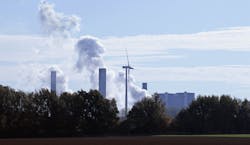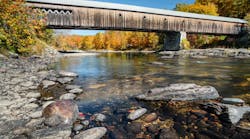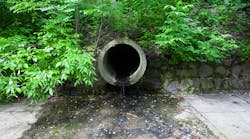WASHINGTON — The US Environmental Protection Agency (EPA) has announced two proposed changes to regulations for the management of coal combustion residuals (CCR) from electric utilities, one of which revises the effluent guidelines affecting wastewater management from steam electric power plants.
“Today’s proposed actions were triggered by court rulings and petitions for reconsideration on two 2015 rules that placed heavy burdens on electricity producers across the country,” said EPA Administrator Andrew Wheeler in an EPA press release. “We are proposing both at the same time in order to provide more certainty to the American public. These proposed revisions support the Trump Administration’s commitment to responsible, reasonable regulations by taking a commonsense approach, which also protects public health and the environment.”
A 2015 rule established a set of solid waste requirements for the management of coal combustion residuals, commonly known as coal ash, generated from coal-fired electric utilities, in landfills and impounds, along with inspection, monitoring, recordkeeping, and reporting requirements. All unlined coal ash ponds were to begin closing in 2018. The CCR rule proposed today amends some of the closure provisions and addresses the deadline for initiating closure of all unlined surface impoundments containing coal ash and for impoundments located in close proximity to aquifers. It includes the following, from the EPA press release:
- A new date of August 31, 2020, for facilities to stop placing waste into these units and either retrofit them or begin closure. This date was determined after evaluating the steps owners and operators need to take to cease receipt of waste and initiate closure and the time frames necessary for implementation.
- Revisions to the alternate closure provisions that would allow certain facilities additional time to develop an alternate capacity to manage their waste streams (both coal ash and non-coal ash) before they must initiate closure of their surface impoundments.
- A court-mandated change in the classification of compacted-soil lined or clay-lined surface impoundments from “lined” to “unlined,” which means that clay-lined surface impoundments would no longer be considered lined units and will need to be retrofitted or comply with closure requirements. In addition, pursuant to the court’s decision, the revisions will specify that all unlined units are required to retrofit or close, not just those that have detected groundwater contamination above regulatory levels.
These and other revisions to the CCR management regulations will allow states to develop their own CCR permit programs and submit them to EPA for approval. The 2016 Water Infrastructure Improvements for the Nation (WIIN) Act, among other changes, gave states the authority to operate coal ash management permit programs in lieu of the federal requirements, provided EPA determines that the state’s requirements are as protective as the federal standards. EPA is currently working with several states with coal ash facilities to establish their own permit programs. Last year, EPA approved Oklahoma’s coal ash program and this year has proposed the approval of Georgia’s program.
For more information on EPA’s proposed CCR revisions, see www.epa.gov/coalash.
EPA is also proposing revisions to its Steam Electric Power Plant Effluent Guidelines Rule issued in 2015.
Under the Clean Water Act, EPA establishes regulations that apply to categories of industrial wastewater dischargers. Known as Effluent Limitations Guidelines and Pretreatment Standards (ELGs), these regulations are technology-based and protect public health and the environment by limiting wastewater discharges into surface waters and wastewater treatment plants.
In 2015, EPA issued a rule that established new ELGs for the nation’s steam electric power plants. That rule was subject to legal challenge and the agency received multiple petitions for administrative reconsideration, including a request for reconsideration from the US Small Business Administration’s Office of Advocacy. In response, EPA undertook a rulemaking that changed the earliest compliance date in the 2015 rule from November 1, 2018, to November 1, 2020, to allow for reconsideration of the regulatory provisions.
The agency began a rulemaking process to reconsider the 2015 ELGs for two specific waste streams produced by steam electric power plants: flue gas desulfurization (FGD) wastewater and bottom ash (BA) transport water.
The proposed rule would make key changes to the 2015 rule, including:
- Changing the technology-basis for treatment of FGD wastewater and BA transport water, which EPA says will result in cost savings for utilities and ratepayers due to lower technology costs associated with the pollutant control systems that are available today and by providing facilities with greater flexibility in the operation and maintenance of those systems.
- Establishing new compliance dates, which, according to EPA, will result in near-term cost savings for utilities and ratepayers and provide greater flexibility to identify and install pollution control technologies.
- Revising the voluntary incentives program for FGD wastewater, which the agency says will help to reduce the pollutants that steam electric plants would discharge in FGD wastewater by an estimated 105 million pounds per year.
- Adding subcategories for high-flow facilities, low-utilization units, and facilities nearing retirement,
For more information on EPA’s proposed ELG revisions, see www.epa.gov/eg/steam-electric-power-generating-effluent-guidelines-2019-proposed-revisions.
EPA is seeking comment on both proposals through two concurrent 60-day public comment periods, during which one virtual public hearing will be held for each rule. More information is available on each rule webpage.






